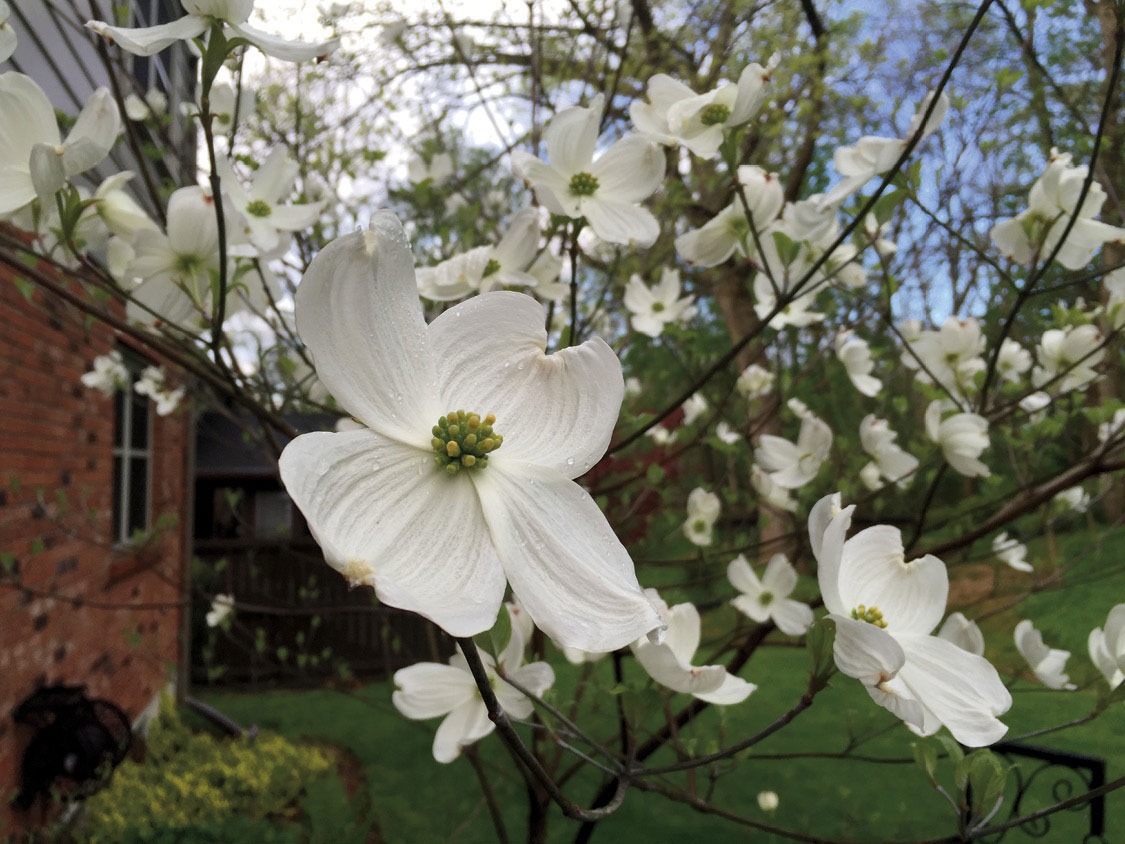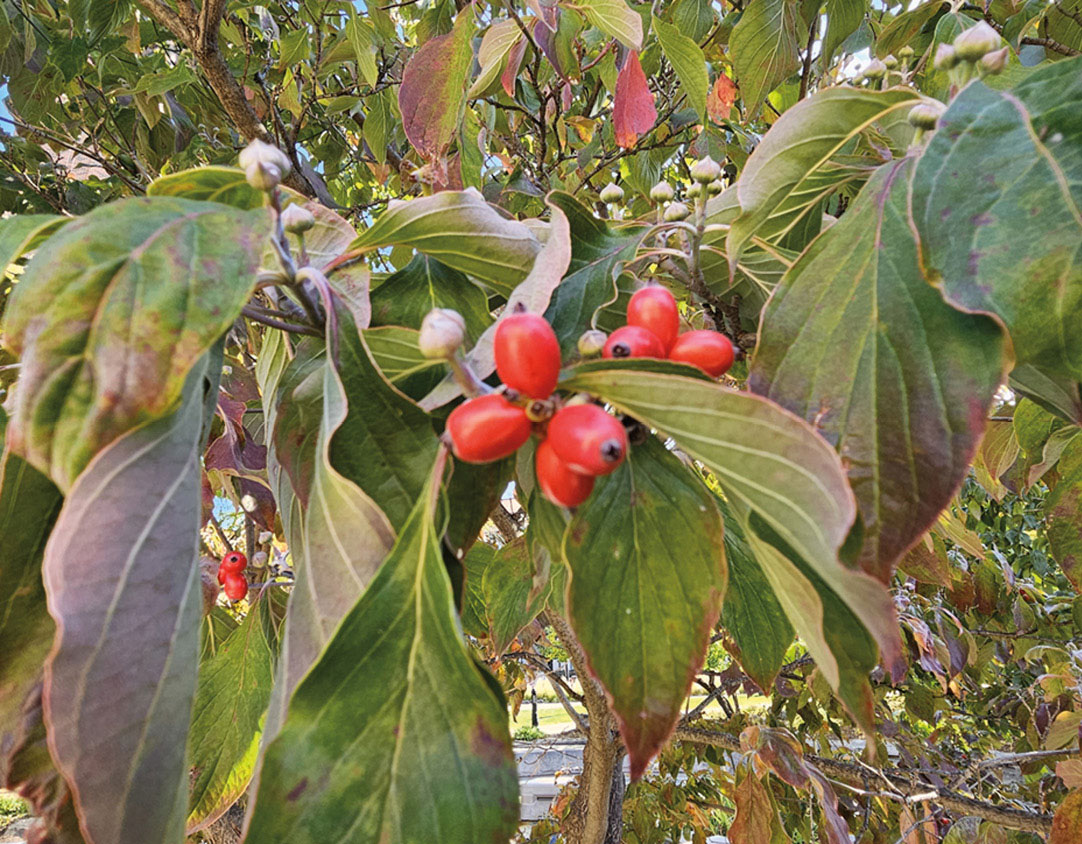Flowering Dogwood
Flowering dogwood is one of our most attractive small trees here in Indiana with beautiful white spring blossoms and very attractive fall red to maroon foliage. According to Native Trees of the Midwest, George Washington was very fond of flowering dogwood and planted many around his Mount Vernon home.
Flowering dogwood, like many members of the dogwood family has opposite leaf arrangement. The simple leaves originate directly opposite each other on the twigs. The leaves are simple, a single leaf blade. They have an interesting venation pattern in the leaf where the veins, running off the midrib, angle and kind of sweep along the edges of the leaf. The leaf pattern, in addition to being opposite on flowering dogwood, also has the tendency for the outer twigs to arch up somewhat, giving almost a pagoda type look to the tree. This can also be found in some of our other dogwoods and sassafras.
Flowering dogwood flowers are very beautiful in the spring and ultimately will produce this cluster of fruit that will turn red in the fall and is eaten by many birds, tree squirrels and gray fox. The seeds are then spread by the birds to produce new dogwood plants.
The bark on flowering dogwood is a rough, alligator hide texture and a light to medium gray.
 Flowering dogwood is a very popular landscape plant because of its beautiful spring blossoms and great fall foliage. You typically need to be careful where you plant it. It likes good soil drainage, can tolerate some shade, and likes some protection from the wind as well. But, in the right place, flowering dogwood is a fantastic addition to your yard as well as being an important understory tree in our native Indiana forests.
Flowering dogwood is a very popular landscape plant because of its beautiful spring blossoms and great fall foliage. You typically need to be careful where you plant it. It likes good soil drainage, can tolerate some shade, and likes some protection from the wind as well. But, in the right place, flowering dogwood is a fantastic addition to your yard as well as being an important understory tree in our native Indiana forests.
Lenny Farlee is an extension forester with the Hardwood Tree Improvement and Regeneration Center at Purdue University. Prior to the HTIRC, Lenny worked with private landowners as a district forester for the Indiana Division of Forestry for more than 15 years.
